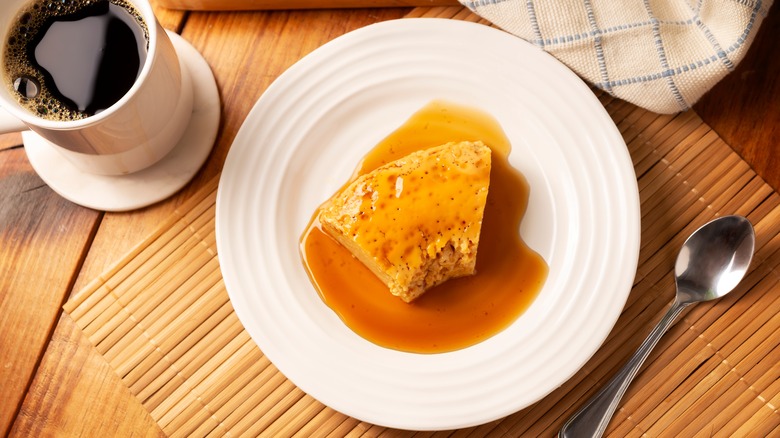How To Make A Delicious Mexican Flan Without An Oven
With its origins going as far back as Ancient Roman times, it's no surprise that flan now comes in many forms. Especially popular in 15th-century Spain, the dish was subsequently spread throughout Latin America, including Mexico.
There, the dish employs the common Spanish foundation of eggs, dairy, and sugar, but comes with further flavorings and thickeners. For instance, there's a goat milk-based version called flan de cajeta as well as vanilla and citrus-flavored renditions. Additionally, unlike other custards, Mexican flans can even be prepared on the stovetop.
After all, cooking flan requires baking the dish in a water bath. Such a technique prevents the egg-based custard from overcooking, evening out the heat over the approximately 45 minute baking time. Plus, the evaporating steam moistens the custard, in the same way a water bath cooks cheesecake. So, place the custard-filled ramekins or custard-filled dish into a pot with bubbling water, and a creamy, airy consistency will still result.
Prepare Mexican flan in a stovetop water bath
Mexican flan's a malleable dessert, so don't sweat the switch up. As a commonly used technique used by cooks in both Mexico and Belize, there's a tradition behind the stovetop. Assemble the custard in the same manner as with other recipes. But instead of preheating your oven, boil water in a wide pot or pan.
Once you're ready to cook, make sure the water bath on your stove top keeps a consistent simmer, a medium high heat setting for most stoves. Once you've lowered your flans into the water, you'll need to ensure the water keeps bubbling, but doesn't boil over. It may also be necessary to refill with more boiling water. And certainly don't put a lid on top; condensation could run into the custard.
Alternatively, for a more hands-off approach, you could also prepare the dish in an Instant Pot. In this case, the flan can be covered, placed atop a water bath, and be pressure cooked in as little as 15 minutes.
Otherwise, the flan's cooking process is the same as in an oven. Remember, there's no need to blow torch the sugar, which distinguishes flans from crème brûlée — as you pour in the caramel first. And shaking the flan out of the cooking vessel is always little tricky. However, once you've got the technique down, it's a great way to craft many Mexican flans. Plus, you can always turn the leftovers into a milkshake.

